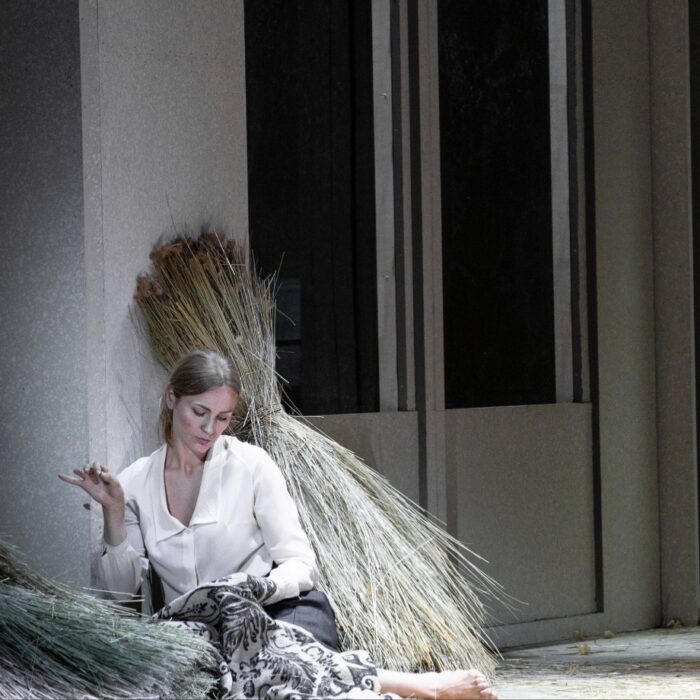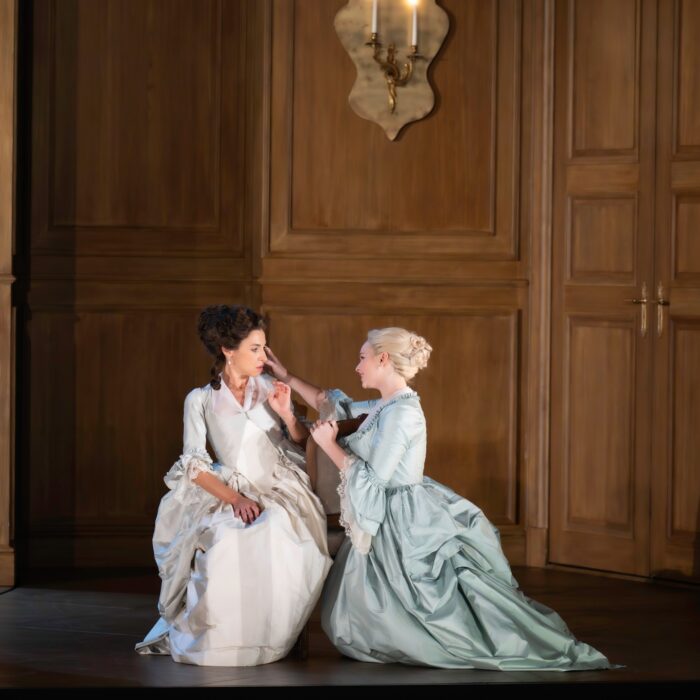
Opera Meets Film: Everyone is Falstaff in ‘A Bigger Splash’
By David Salazar“Opera Meets Film” is a feature dedicated to exploring the way that opera has been employed in cinema. We will select a section or a film in its entirety, highlighting the impact that utilizing the operatic form or sections from an opera can alter our perception of a film that we are viewing. This week’s installment we will take a look at the Luca Guadagnino’s “A Bigger Splash.”
It’s a pretty well-known fact that director Luca Guadagnino, who recently authored “Call Me By Your Name” is an opera lover. His film “Io son l’amore” took its title from “Andrea Chénier’s” famous quote (we will cover this film in a future edition). He has also directed opera, his first such endeavor coming in 2011 when he took on Verdi’s “Falstaff” in Verona. And it is “Falstaff” that dominates “A Bigger Splash.”
Mind you, the film and the opera don’t share much in common, though the character of Harry, as played by Ralph Fiennes in arguably his finest performance to date, is a Falstaffian archetype. He might not be rotund like the famed Shakespeare character (in fact he is extremely thin), but he shares a massive appetite for all things, including food, women, knowledge, and most importantly, the spotlight. He doesn’t stop talking the entire time he is in the film and when he is not onscreen, the other characters constantly talk about him. This is the case in Verdi’s opera where scenes without Falstaff are almost always exclusively about Falstaff.
He is lovable but also highly fastidious for both the viewer and the other characters, sticking his nose where no one wants it.
It’s no surprise that Guadagnino throws excerpts from the opera into his film, and with tremendous deliberation.
Freedom Embodied
“A Bigger Splash” is freedom embodied. The film meanders throughout its first half with no real plot or true sense of direction. The only palpable tension that emerges is between the four central characters and even then, we feel that they love one another too much for the film to take a sharp turn. But it ultimately does and Guadagnino has been building us to it through opera.
For those who haven’t seen the film, be advised that there is a major spoiler incoming.
The biggest source of tension in the movie comes from the love triangle between Harry, Marianne Lane, and Marianne’s current lover Paul. We know Harry and Marianne had a thing back in the day and his agenda seems to be to pry her away from Paul, who he ironically threw her to. The opera has three major iterations throughout the film and they all center on the tension between Paul and Harry.
We hear the opening of the opera as the quartet of characters (including Harry’s daughter Penelope) have dinner. Harry wants Marianne to talk (she has lost her voice) and Paul insists that she shouldn’t. The opera comes to the fore for a moment and then fades into the background. We can still hear it, but just barely. It’s off-putting at first, especially when one considers that Guadagnino’s soundtrack blasts throughout without any kind of distortion or hindrance. Why is he withholding the opera?
It returns a bit later while Paul and Harry are driving back to the villa. Harry challenges Paul on his former drinking problem, causing more tension between the two than we have seen to this point. This time we get “Eh Taberniere” from Act three, the descending violin scale kicking off the segment. Again, the music starts off rather present in the sound mix before turning into a mere whisper and hush. It’s clearer in the sound mix than the first excerpt playing throughout the heated exchange between the two men.
Then we get another passage of opera precisely at the climax of the relationship between these two men. As Falstaff counts off the seconds before midnight in Verdi’s famous opera, the low strings ominously playing, the two men come together for their biggest argument which ends in Harry’s murder.
In the opera, this music leads up to the moment where Falstaff is ridiculed; but this movie, which has been comedic in tone throughout now takes a turn for the tragic and Guadagnino highlights this with the opera. Its appearances are off-putting but highly specific in their placement. While highlighting the comedic elements of the film through the choice of opera, it also represents the biggest and most serious tonal shift in the soundtrack. Through the opera, Guadagnino highlights that these tense moments are unusual within the context of the other music. If you were to just strip the images and dialogue from the film (strange right) and just play the soundtrack, the sudden interjections of “Falstaff” would be rather strange and create a unique tension within the context of the other music.
And that’s the genius of it. After the death scene, the music also takes on a more operatic nature with orchestral intrusions throughout the final segment as the murder is investigated.
But the end of the film ultimately proves to be a comedy in and of itself. The film doesn’t necessarily end on the greatest of highs, but Guadagnino highlights that through tragedy there can also be comedy. This occurs when the police officer, instead of doing his job and searching for the murderer, prioritizes an autograph from Marianne. He, too, is Falstaff. And in some way, Guadagnino is pretty much stating that we all are Falstaff in our own ways.
Tutto nel mondo è burla.


